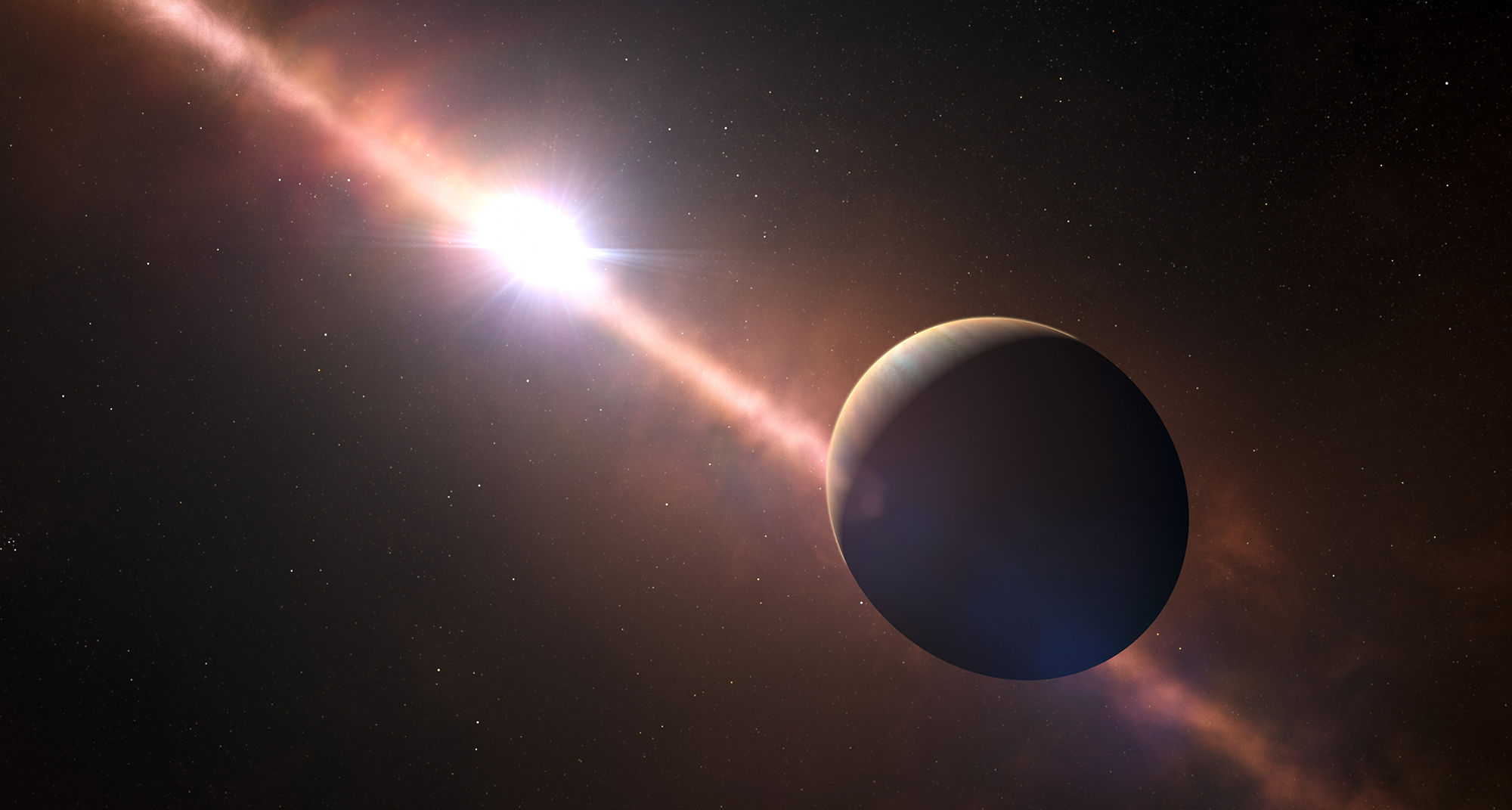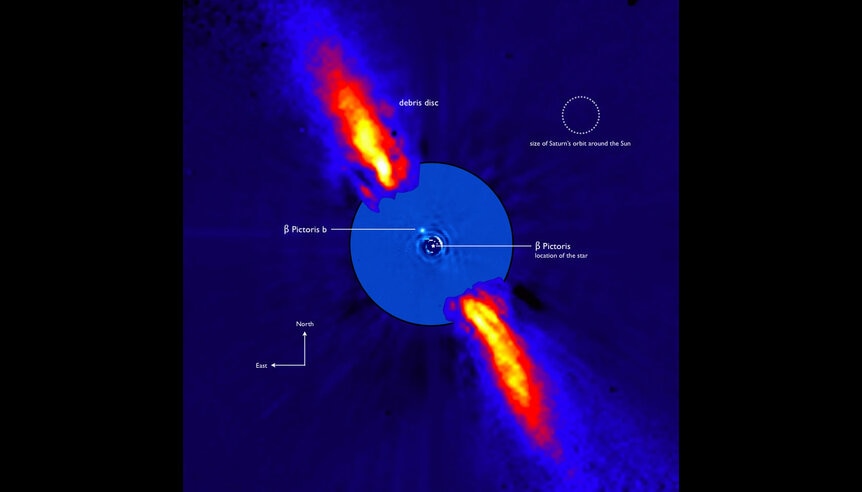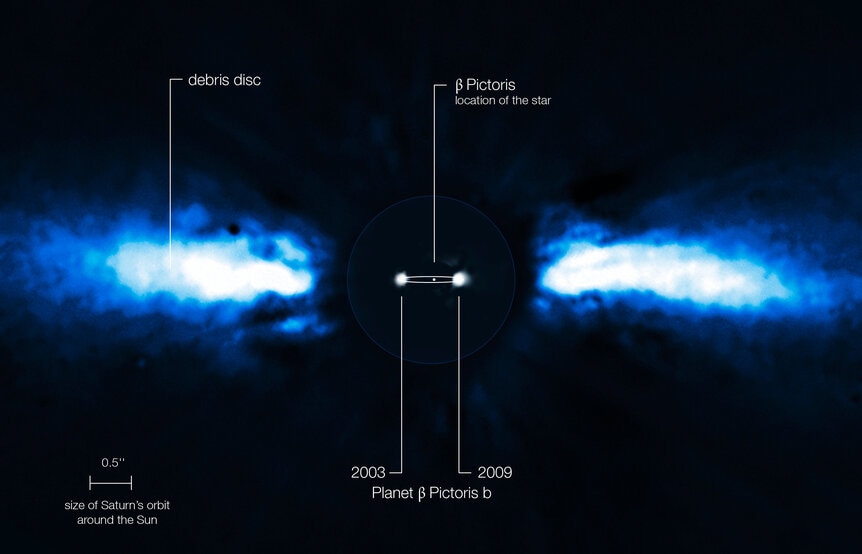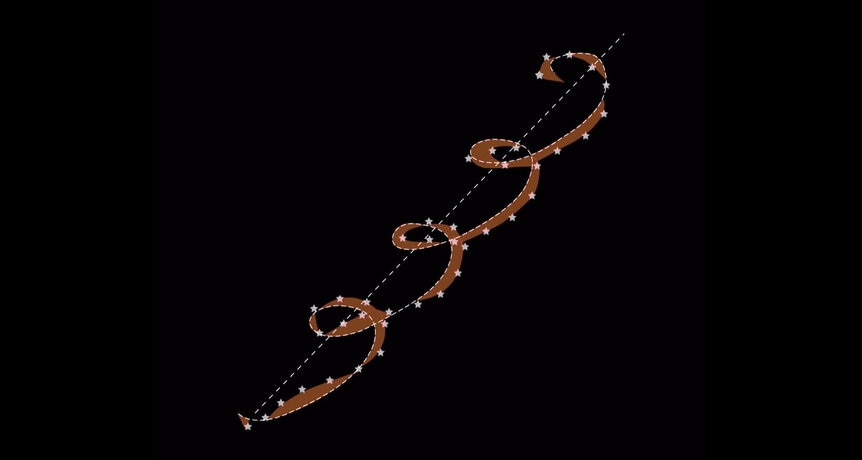Create a free profile to get unlimited access to exclusive videos, sweepstakes, and more!
Weighing an alien exoplanet by watching it throw around its star

This is exceedingly cool: Astronomers have used a very clever technique to “weigh” an exoplanet, a planet orbiting another star. By very carefully watching the motion of the star through the sky, they’ve been able to see the changes to its trajectory by the orbiting planet, allowing them to get its mass.
The planet is called Beta Pictoris b, or Beta Pic b for short. The star, Beta Pic, is about 167 light years away, and is a very young star, probably less than 20 million years old. The Sun is 4.56 billion years old, for comparison.
The star is so young it’s still surrounded by the disk of gas and dust from which it formed. We can actually see that in images taken in the infrared! This made Beta Pic a popular target to understand how stars and planets form.
The exoplanet Beta Pic b was discovered in 2008, seen in direct images of the system taken using the Very Large Telescope. When the bright light from the star was blocked, the planet popped out in the images and was easy to see. Unlike planets in our solar system, which we generally see due to reflected light from the Sun. Beta Pic b is so young that it’s still seriously hot — 1,450°C (2,600° F) — heated by the energy of material accreting onto it. This means it gives off a lot of infrared light, which is why we are able to see it directly.
Not only that, but over time the planet could be seen to physically move as it orbited the star! The orbit is very nearly edge-on as seen from Earth, so Beta Pic b appears to move back and forth over time. We know the orbit is about 20 years long, but the observations to nail that down better are difficult, so there’s a lot of uncertainty to it.
The mass of the planet is hard to figure out, too. Measurements of it mostly depend on models of how quickly planets cool after forming, and there’s a ton of uncertainty. We don’t know the age very well (models put it at 8 – 21 million years old, so a bit of a range there), and the mass estimates go from 4 times that of Jupiter to 17! It depends on what model you use.
One of the cool aspects of the new research is that it cuts right through all that, measuring the planet’s mass without the use of models. Instead, it uses the star’s wobbly motion.
The star Beta Pic orbits the center of the Milky Way galaxy, and as it does, it moves at a different speed than the Sun. So, if we observe it over many years, we can see it physically move against background stars. This called “proper motion.”
On top of that, as the Earth orbits the Sun, we see the star from a very slightly different angle every time. Over the course of a year the star will make an ellipse in the sky (if the star is located directly “above” the Earth’s orbit it’ll make a circle, and if it’s in the plane of Earth’s orbit it’ll make a line, and anything in between is an ellipse) due to this effect, which is called parallax.
When you combine proper motion and parallax, the star will move in a helix, a windy corkscrew, instead of a straight line.
The astronomers in the new work analyzed Beta Pic data from the European satellites Hipparcos and Gaia, both of which were designed to very accurately measure the positions and motions of stars. Hipparcos was launched in the late 1980s, and operated for several years. Gaia launched in 2013 and is still in operation, and is in general much more accurate than Hipparcos.
Looking at the motion of Beta Pic over the years, the corkscrew pattern of combined proper motion and parallax was seen. Hurray!
But… there’s another motion superposed on top of that. Instead of a clean helical motion, the star appears to swing a little more than you’d expect. And that is due to the planet Beta Pic b.
The planet orbits the star because the star has gravity, which in turn is due to its mass (that’s a basic law of gravitation, recognized by Newton centuries ago). But the planet has mass too! So really the star and planet both orbit their mutual center of gravity, called the system barycenter. The circle the star makes is very small — like, really very really small — but it can be seen in the Gaia and Hipparcos data! By measuring that offset, the astronomers could find the mass of the planet.
It’s like the sport of hammer throwing. The hammer makes a big circle around the athlete, but the athlete makes a smaller circle, which depends on how fast they’re spinning and the mass of the hammer:
Using this physics, and measuring how much Beta Pic moves, the astronomers find that the mass of Beta Pic b is 11 ± 2 times the mass of Jupiter, at the low end of the range of models. That still makes it a very beefy planet!
They could also constrain the orbital period a bit better, too, showing that it’s very likely longer than 22.2 years and probably not much more than 24 years or so.
This is terrific work. The fact that that mass they get doesn’t depend on models means the models can be adjusted (or in some cases thrown out) to understand better how the planet behaves. Also, different formations models predict different masses for the planet, so this mass can be used to differentiate between them, too (if you’re curious, the mass favors a “hot start” model — where the planet forms directly from a local part of the protoplanetary disk collapsing, keeping it hot — over a “cold start” scenario where the core of the planet forms first and incoming material swirls in a disk around it, giving it time to cool off).
As I read the paper, I had to laugh at myself. If someone had approached me last week and asked me if it were possible to see the barycenter motion of a star due to the planet orbiting it, I would’ve thought no way. It’s too small.
But in this case, technology has stomped on my intuition. The long time baseline of observations from Hipparcos to Gaia, combined with Gaia’s accuracy, means we can now measure displacements in the sky far smaller than I would’ve guessed.
As usual, I don’t mind being wrong! In this case, it means we’re doing a lot better than I would’ve thought possible, and that’s welcome news. Plus, this technique can be used for other stars and their planets, broadening our database of planet masses, and that will no doubt lead to better understanding of how these and other planets form.
It’s another tool in our belt for studying alien worlds orbiting alien stars, and that makes me very happy. This is an amazing new field, and it gets more amazing all the time.

















